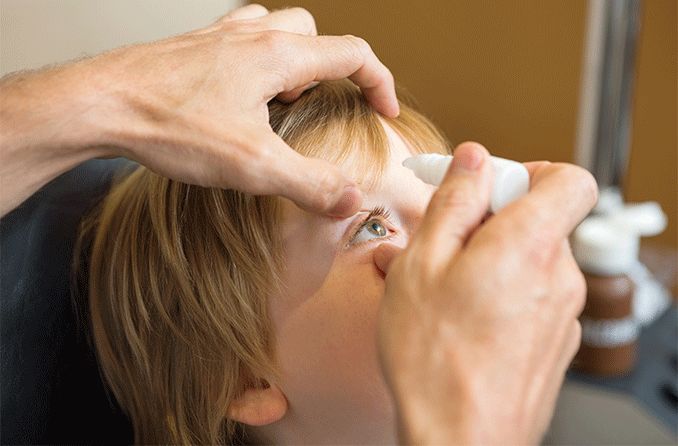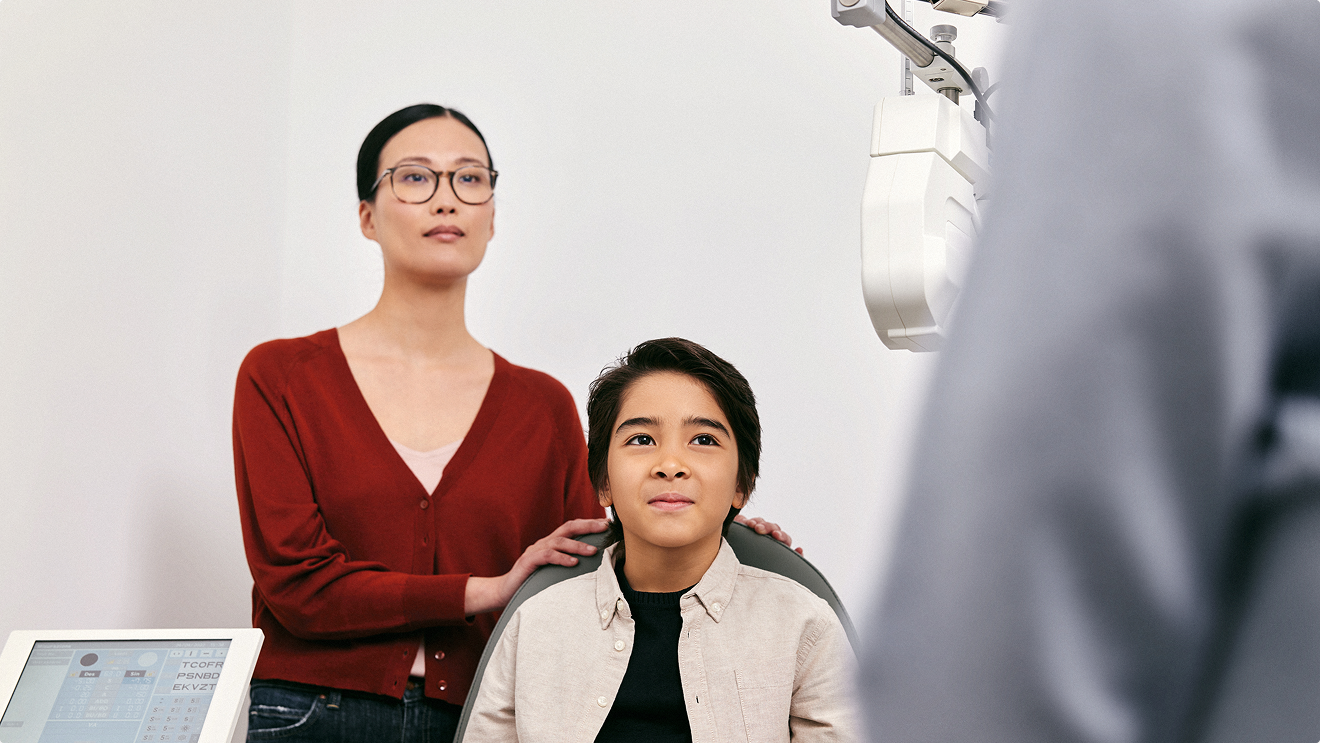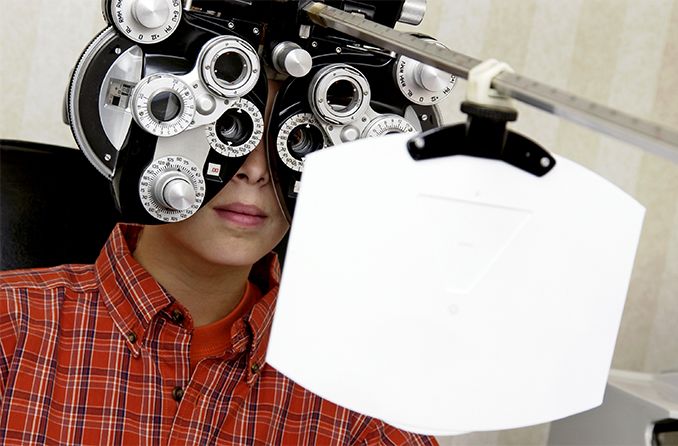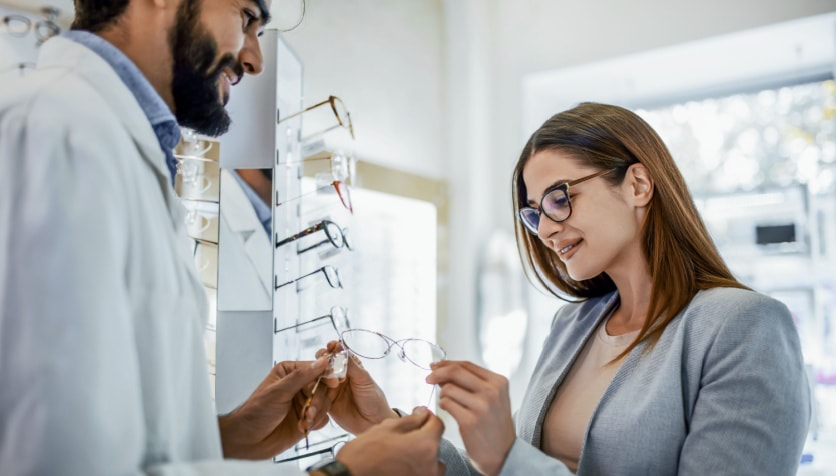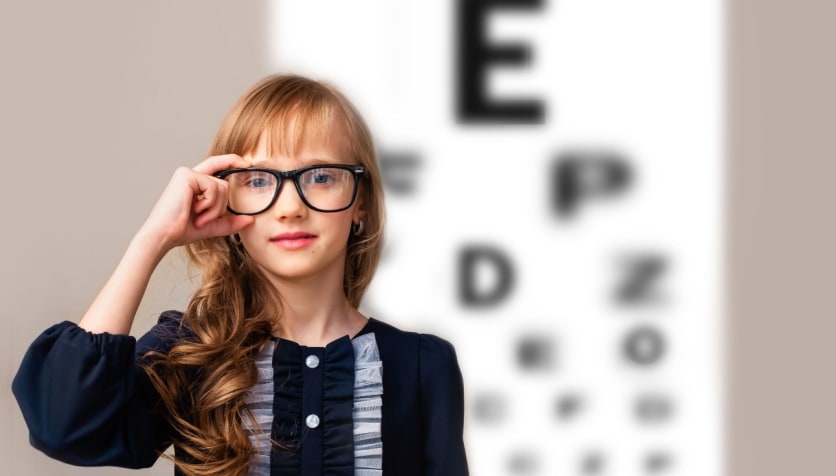Myopia now and in the future
Scientists expect that in 30 years, about 50% of the world’s population will be myopic. This means that almost 4.76 billion people will have myopia by 2050. Rates of myopia development and progression have been particularly high in school-aged children. This is especially concerning because the rate of myopia progression is higher when children develop myopia at a younger age.
Wearing glasses or contact lenses is certainly an inconvenience. Of greater concern is the fact that the risk of eye disease and irreversible vision loss rises as the degree of myopia increases. This means that in the near future, millions of children are at risk of developing irreversible vision loss as adults.
Can we control myopia progression in children?
So what can be done to slow down the progression of myopia? There are currently a number of strategies that have shown some success in slowing down the progression of myopia and elongation of the eyeball. These strategies are important because higher myopia is associated with several vision-threatening complications.
Specialized contact lenses and glasses have been found to be beneficial in a number of studies. One form of myopia control that is convenient for parents to implement into their routine comes in the form of an eye drop. This option is the use of dilute atropine eye drops at nighttime in children.
What is atropine?
Atropine is an eye drop that has been used in eye doctor’s offices for many years. It causes the pupil to dilate and temporarily paralyzes the accommodative system of the eye. It is not only used in eye doctors’ offices, but also in veterinary offices. Atropine eye drops may be used in dogs to dilate the pupil and for the management of canine eye conditions.
Atropine is an anticholinergic drug. This means that it blocks the chemical acetylcholine. This results in temporary paralysis of the accommodative system and dilation of the pupil. The dosages that are used for myopia control in children are lower than what has been typically used in doctors’ offices. Several studies are underway to evaluate the most effective dose and regimen.
How do atropine eye drops for myopia control work?
A low dose of atropine eye drops instilled in both eyes at bedtime has been shown in multiple studies to slow the progression of axial myopia in children. Axial myopia is the result of an excessive increase in the length of the eyeball relative to the focusing power of the lens and cornea. It is the most common type of school-aged myopia.
The original hypothesis behind atropine eye drops for myopia control was that they worked by disabling the accommodative system. However, experimental models have shown that the effect of atropine on myopia progression is not due to paralysis of accommodation.
The specific mechanism by which atropine may slow down myopia hasn’t been determined. However, recent research has shown that atropine may slow down the progression of myopia. It does so by acting on certain receptors in the back of the eye, such as retina, RPE, choroid and sclera.
What is the accommodative system, and how will atropine affect my child’s vision?
The accommodation system of the eye adapts to changing viewing distances so that incoming light rays are focused on the retina. This system includes the natural lens of the eye and the ciliary muscle, a circular muscle surrounding the lens.
When the eyes gaze at a distant object, the ciliary muscles relax. This causes the lens to have a flatter curve, which is needed to focus incoming light rays from distant objects on the retina.
When the eyes gaze at a near object, the ciliary muscles contract. This causes the lens to have a steeper curve. This converges the light more to focus incoming light rays from near objects on the retina.
Atropine eye drops temporarily weaken the contractions of the ciliary muscles, paralyzing accommodation. Atropine drops also relax the iris (an involuntary muscle), which causes dilated pupils.
The lower dose of atropine eye drops used for myopia control should not affect your child’s accommodation system too much. If your child experiences difficulty, speak to your eye doctor about reading glasses and sunglasses.
Are atropine eye drops for myopia control safe for children?
Although the use of 1% atropine in the treatment of amblyopia (lazy eye) is FDA approved, the use of low-dosage atropine is considered “off label.” This means that the FDA has not approved this drug for this specific use.
Clinical studies that have looked at the safety of using atropine eye drops for myopia control suggest that it is safe. The long-term effects of sustained use of low-dosage atropine eye drops are unknown.
What is the dosage of atropine used for myopia control?
Eye doctors usually use 1% atropine eye drops in their offices for pupil dilation. For myopia control, children require a lower dose such as 0.01%, 0.025% or 0.05% concentration.
Generally, the higher the concentration of atropine, the better its effect on myopia control. However, a lower dose reduces the risk of potential side effects. Atropine drops of lower concentrations usually need to be ordered from a compounding pharmacy by an eye doctor.
Your eye doctor will recommend the most effective dosage for your child after a comprehensive eye exam and medical history have been completed.
What are the side effects of atropine eye drops?
The stronger the dosage of atropine eye drops, the more likely it is that side effects will occur.
Side effects of atropine eye drops include:
Light sensitivity due to dilated pupils
Difficulty with near work such as reading because accommodation has been paralyzed
Stinging of the eyes when instilled
Ocular allergy or sensitivity to the formulation
Lower concentrations of atropine, such as those used in children for myopia control (0.01%, 0.025%, 0.05%) have been shown to affect pupil size and up-close vision only a small amount.
SEE RELATED: Cycloplegic and Mydriatic Eye Drops
Will my child still need to wear glasses or contact lenses?
The prescription that your child needs to see clearly will usually remain the same. Atropine drops for myopia control are usually instilled at bedtime so daytime contact lens wear is safe.
Although low dosage atropine should not affect your child’s ability to see up close very much, reading glasses can be used if needed. Sunglasses can be worn outdoors if light sensitivity becomes an issue.
Can atropine be used in combination with other myopia control strategies?
It is generally safe to combine atropine for myopia control with specialized glasses or contact lenses for myopia control. You should begin one strategy first, and when your eye doctor thinks it is appropriate, they can start the additional strategy.
For example, atropine drops may be started for myopia control. If this strategy is well-tolerated, contact lenses for myopia control may be added by your doctor after several months.
Can I stop atropine drops for myopia control anytime?
Atropine drops will usually need to be tapered when being discontinued. It is important to discuss discontinuation of the drops with your doctor to determine the best strategy.
Will the benefits of slowing down myopia be lost if I discontinue atropine drops for myopia control?
A “rebound effect” in which there is an accelerated increase in myopia after discontinuing atropine eye drops for myopia control is a concern.
As more studies provide long-term data, the answer to how long a child may need to continue with atropine drops and the tapering schedule for long-term myopia control will become more clear.
What does the most recent scientific literature say about atropine eye drops for myopia control?
There have been a number of recent studies that have evaluated the effectiveness of atropine eye drops for myopia control. The results of the study are listed below.
In general, a lower dose seems sufficient to slow progression of myopia, and has the benefit of fewer side effects.
Low-concentration atropine for myopia progression (LAMP)
Published in 2019, this one-year study found that:
0.01% atropine had the least effect
0.025% atropine effect was between the 0.01% and 0.05% group
0.05% atropine showed the greatest effect of slowing myopia progression
Side effects were minimal for all three dosages
LAMP Phase 2
Published in 2020, after the second year of the LAMP study, this study again found that:
0.05% was the most effective dosage
0.05% had double the efficacy observed with 0.01% atropine
The second-year efficacy of 0.05% and 0.025% atropine remained similar
Side effects were minimal for all three dosages
Effect of low-dose atropine on myopia progression, pupil diameter and accommodative amplitude: low-dose atropine and myopia progression
Published in 2020, this one-year study found that:
0.02% atropine was more effective than 0.01% atropine
Side effects were similar for both dosages
Additional studies such as CHAMP, CHAMP-UK, MTS1 CHAPERONE and MOSAIC are ongoing and expected to be complete in the next few months to years. More studies are in the process of enrolling subjects.
Should I start my child on atropine eye drops for myopia control?
This is a decision that will depend on your personal level of comfort with the latest research. Read and learn about this option and speak to your eye doctor about your child’s individual needs. Your doctor will help you to determine if this is an appropriate myopia control option for your child.

